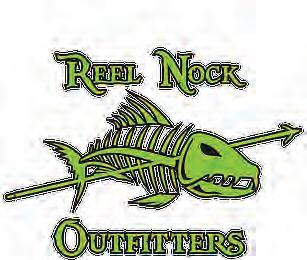
2 minute read
DRIFTING FOR NIGHTTIME YELLOWFIN ON GULF FLOATERS
Watch Video
Yellowfin tuna are some of the most sought after gamefish in the world. They are the ahi tuna on the menus at restaurants and sushi bars, and in the water they have the speed and power to wear down anglers and break gear.
The signature “spiral” that tuna commence in the waning moments of a fight is responsible for untold numbers of broken lines and broken hearts. After battling 30 mph runs for 20 minutes or more, the weary angler, captain and crew face one final test, a team effort to survive the spiral and get the fish on deck. These tense moments, when a big yellowfin turns sideways and begins to circle, using its body’s mass as leverage, are the most critical minutes of the fight. If the line even touches the boat, it will snap, and the circling fish provides many opportunities for this to happen.
On chartered trips, the main limitation on the catch is the ability of the paying angler. The good news is there will likely be multiple opportunities on overnight trips to deep-water oil platforms off Texas. A great trip with six anglers would yield a dozen yellowfin tuna in the 40- to 120-pound range, and that doesn’t include the shots anglers will have at mahi-mahi, wahoo, marlin and blackfin tuna.
Out of Galveston, it’s 100 miles or more into the Gulf of Mexico to reach the enormous floating gas and oil structures off the edge of the Continental Shelf. These deep-water facilities, known as “floaters,” create their own food chain, consolidating bait and gamefish from miles around.
On a typical 36- or 48-hour trip, don’t plan on sleeping much. The floaters are brightly lit at night, which is when the tuna fishing is best. After identifying fish on the sonar, chumming and drift fishing with 30-pound-class tackle is usually the most productive method for yellowfin.
Sometimes the tuna will start breaching and leap into the air crashing bait like king mackerel. It’s for these occasions, when fish are on the surface, that big spinning rigs armed with poppers are kept on deck.
Drifting and pulling poppers while chugging back up-current to start a new drift goes on all night long. At dawn, the bait rods come in, and it’s time to start trolling. The primary daylight targets are marlin, sailfish, wahoo and dolphin.
Between night and day, it equates to a whole lot of big fish packed into a weekend at sea. It’s a grand adventure, and a meat trip of epic proportions in the Gulf of Mexico.
For more on big-game fishing in the Gulf of Mexico, see www.coastalanglermagazine.com.
smaller chicken dolphins. If lures are your thing I prefer Yozuri Crystal Minnows and honestly color doesn’t matter. Pitch around the weed lines or patches and look deeper down for the bigger Mahi. As for Tuna with all the chumming going on, I like to send down a vertical jig on 60#-80# test at least 100’ below the boat. Working your jig through the water column is a good way to fire up any kind of fish that may be lurking around in the shadows. If you have a large diamond jig I’d put some heavy wire in front of it for a chance at a wahoo. Triple Tail are amazing fish on light tackle and I recommend 15#-20# fluorocarbon and #2 Owner hook. Live
If bottom fishing is your go to joy Vermillion snappers, Groupers, and Rock salmon is my target. For Vermillion snappers I like using a 2-3 hook chicken rig mixed with cut squid and Boston mackerel. Let your weight sit right on the bottom and wait for those 2-3 light bites. Rock salmon and Groupers like to hide out in the rocks and caves, so a slip lead is what I like to use. Heavier leader line for Groupers and larger baits close to the bottom. Feel the bite and start cranking. The first 20’-30’ are the most

When it comes to offshore fishing don’t give up. There’s a lot of trial and error. Figure out what works best for you and as always keep your lines out and keep them tight.









